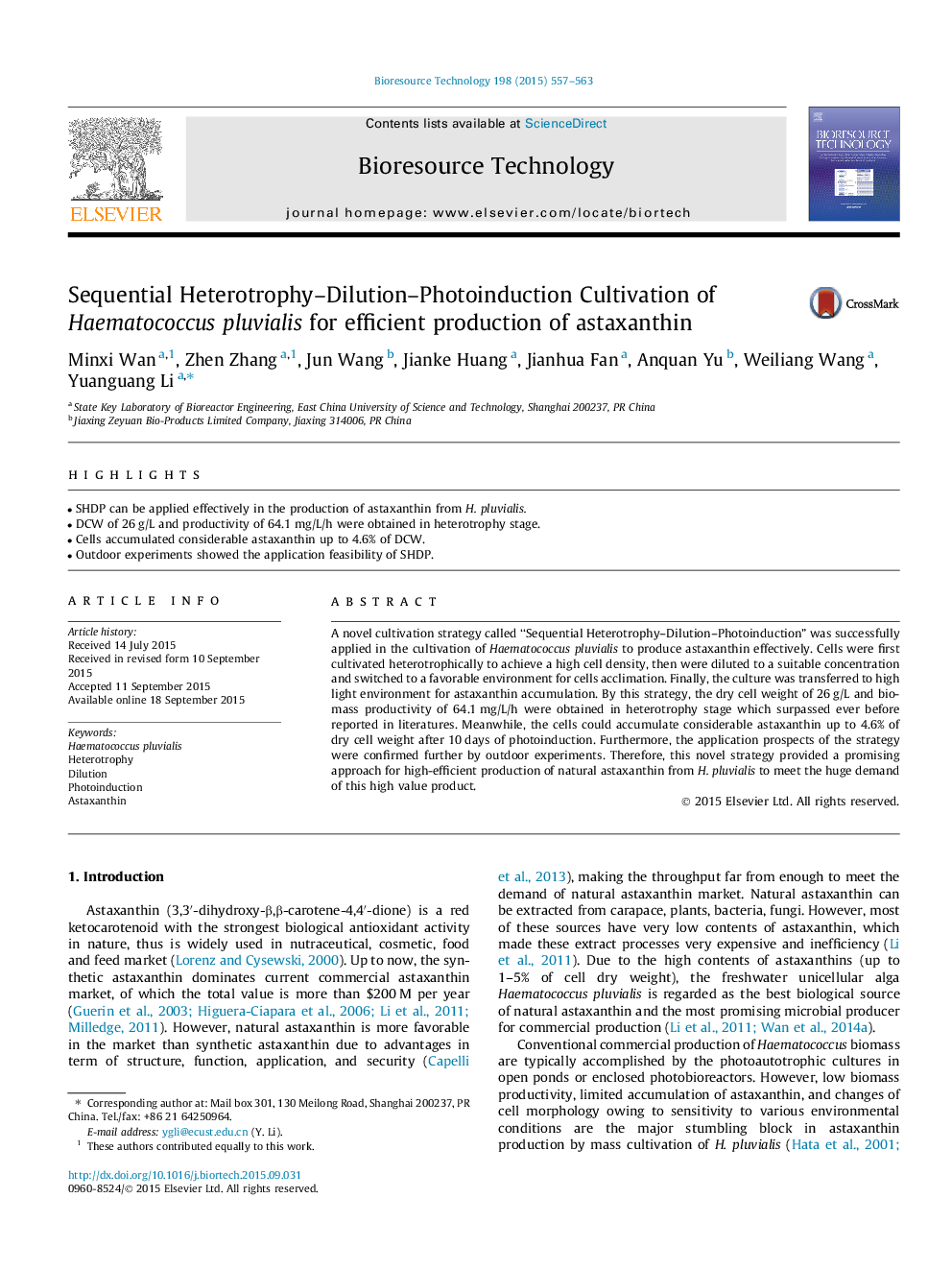| Article ID | Journal | Published Year | Pages | File Type |
|---|---|---|---|---|
| 679473 | Bioresource Technology | 2015 | 7 Pages |
Abstract
A novel cultivation strategy called “Sequential Heterotrophy-Dilution-Photoinduction” was successfully applied in the cultivation of Haematococcus pluvialis to produce astaxanthin effectively. Cells were first cultivated heterotrophically to achieve a high cell density, then were diluted to a suitable concentration and switched to a favorable environment for cells acclimation. Finally, the culture was transferred to high light environment for astaxanthin accumulation. By this strategy, the dry cell weight of 26Â g/L and biomass productivity of 64.1Â mg/L/h were obtained in heterotrophy stage which surpassed ever before reported in literatures. Meanwhile, the cells could accumulate considerable astaxanthin up to 4.6% of dry cell weight after 10Â days of photoinduction. Furthermore, the application prospects of the strategy were confirmed further by outdoor experiments. Therefore, this novel strategy provided a promising approach for high-efficient production of natural astaxanthin from H. pluvialis to meet the huge demand of this high value product.
Related Topics
Physical Sciences and Engineering
Chemical Engineering
Process Chemistry and Technology
Authors
Minxi Wan, Zhen Zhang, Jun Wang, Jianke Huang, Jianhua Fan, Anquan Yu, Weiliang Wang, Yuanguang Li,
